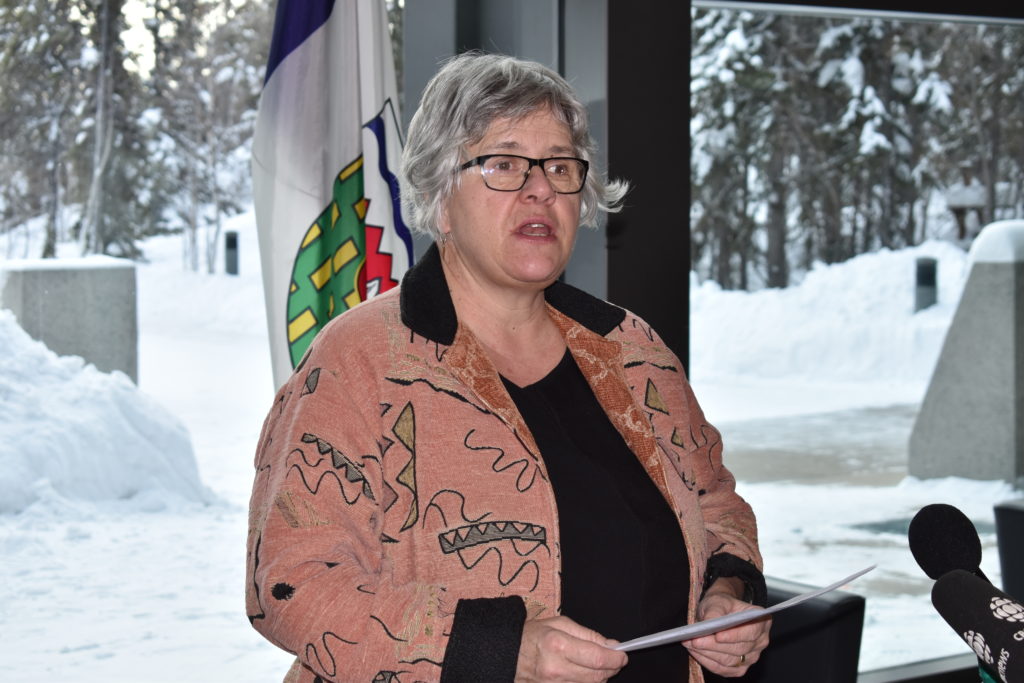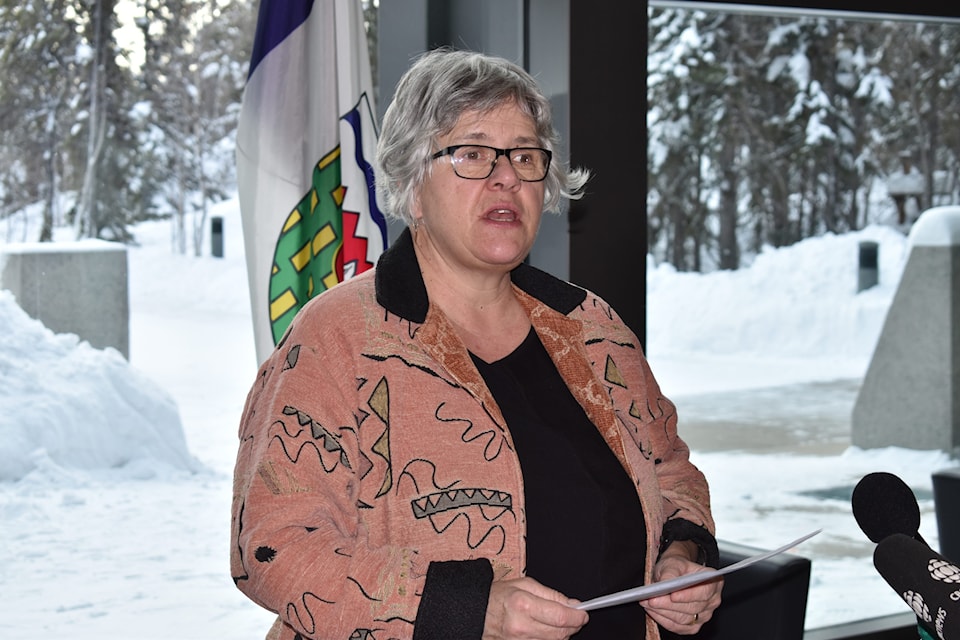The fourth shipment of Moderna vaccines is expected to arrive "right on time."
Chief public health officer Kami Kandola said the doses are to land in the NWT during the week of Feb. 22 to 26.
“And once we receive that shipment, we're not anticipating a delay in the vaccine rollout," Kandola said Wednesday.

Delays in the vaccine schedule earlier in February reduced the third shipment from 7,200 doses to 4,700 and made uncertain the status of the fourth shipment, said Health Minister Julie Green on Feb. 2.
The fifth shipment is anticipated to arrive in mid-March.
Kandola said it's not yet known how many doses would be in the fourth shipment.
Teachers prioritized for vaccine
Teachers will be prioritized along with other frontline workers for receiving the vaccine before the general population at the beginning of March in Yellowknife, Hay River, Fort Smith and Inuvik, Kandola said.
"Any frontline workers who cannot work virtually can be considered a priority and that also includes teachers," she said.
That announcement comes less than a week after Great Slave MLA Katrina Nokleby asked that teachers be designated as essential workers and be given the immediate opportunity for vaccination.
Kandola went on to explain that even if teachers were given essential worker status, they would still have to self-isolate for 14 days when they return to the territory from travel.
Teacher isolation also helps avoid Covid-19 outbreaks in schools, an occurrence the NWT has managed to avoid, Kandola said.
More than 14,000 doses administered
News on the shipment comes as more than 14,157 NWT residents have received vaccines, with 13,578 getting their first dose and 579 the second, said Green, who also spoke at the news conference.
Most of the 579 individuals are residents of long-term care facilities and their support staff, who were among the priority groups to first receive the vaccine, said territorial medical director Dr. AnneMarie Pegg.
To reach the goal of vaccinating 75 per cent of the eligible adult population of 34,400 people, about 26,000 people will need to be vaccinated, Kandola said.
A second-dose clinic in Yellowknife was announced Tuesday that will run in the second half of February for people who receive their first dose in January.
Research ongoing with second dose window
Pegg added that for now the vaccination roll out should be able to deliver second doses inside the 42-day window as recommended by the National Advisory Council on Immunization (NACI).
Kandola explained that NACI data shows Moderna gives 92 per cent efficacy against coronavirus 14 days after the first dose.
“That efficacy based on the Moderna clinical trials is (based on) data up to the 42nd day. What we do know about vaccines and immune response is that we don't anticipate a drastic reduction in immunity on day 43. We're still waiting for more information,” she said.
She also cited Quebec and the United Kingdom as jurisdictions that have introduced 12-week windows for the time between first and second doses.
Gahcho Kue Mine precautions
Following the announcement Wednesday of six new Covid-19 cases in the NWT, five of them related to the outbreak at the Gahcho Kue Mine, Kandola said the strain of Covid-19 detected at the mine isn't highly infectious and she encourages all mine and resource workers to be vaccinated.
Responding to a question as to whether the controls in place at the mine are sufficient, she said her team has been holding extensive discussions with the mine's management on infection prevention control, the screening process and has encouraged the visit of industrial hygienists.
“One-third of their workers were repatriated out of the territory (and are self-isolating), one-third (were sent back to) Yellowknife. And then the one-third who are on-site have more stringent isolation measures and are separated from each other. They're undergoing regular testing, but we're trying to minimize as much exposure as possible,” she said.
Following the mine's temporary suspension of operations on Feb. 6, Kandola said it could resume operations if a new cohort of workers who have completed 14 days of isolation and undergone testing were brought in.
“A significant amount of them will be already vaccinated. Once that occurs then no one coming in would be at risk from the original outbreak.”
The outbreak at the Gahcho Kue Mine includes 15 cases, three of which have recovered and 12 are active.
